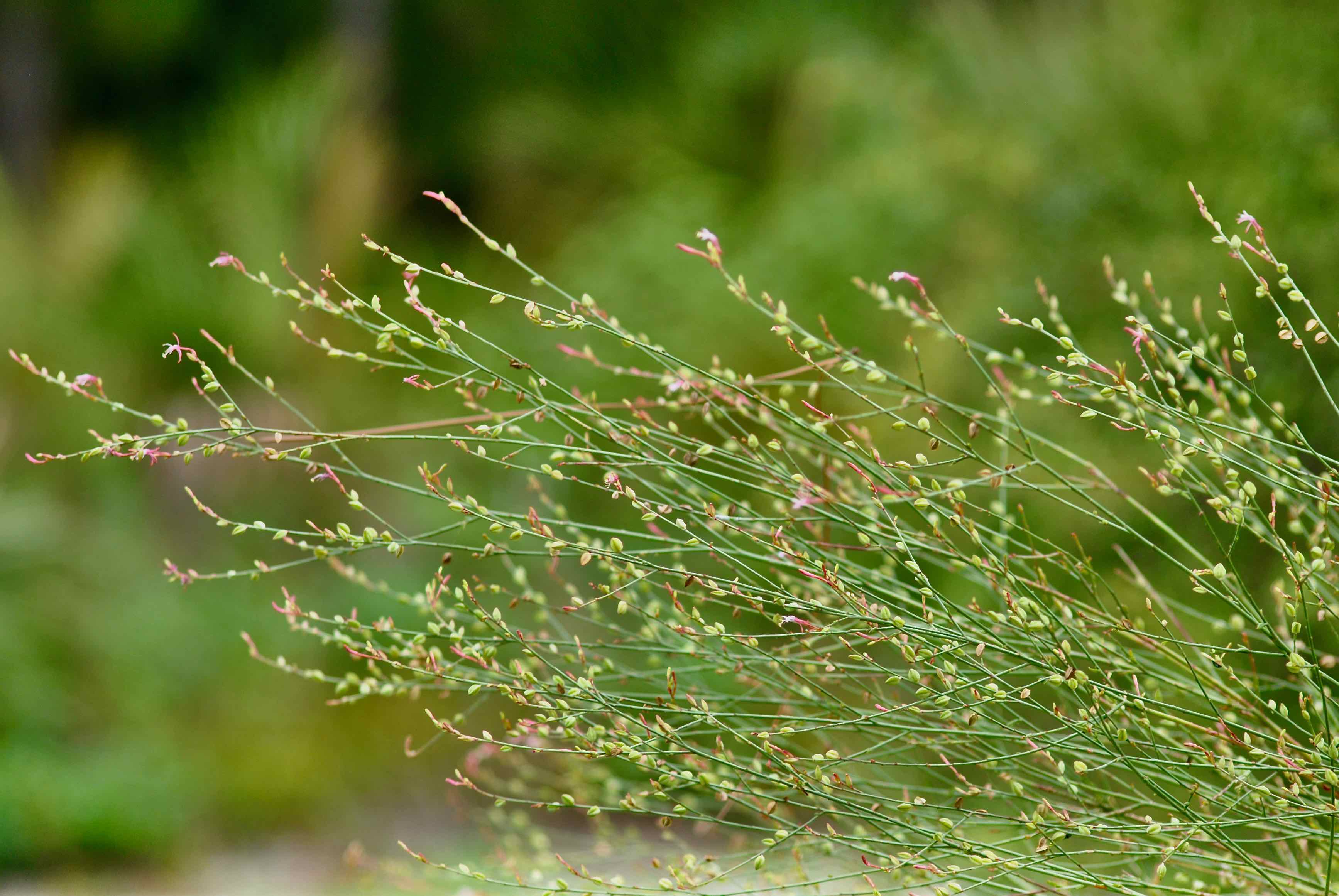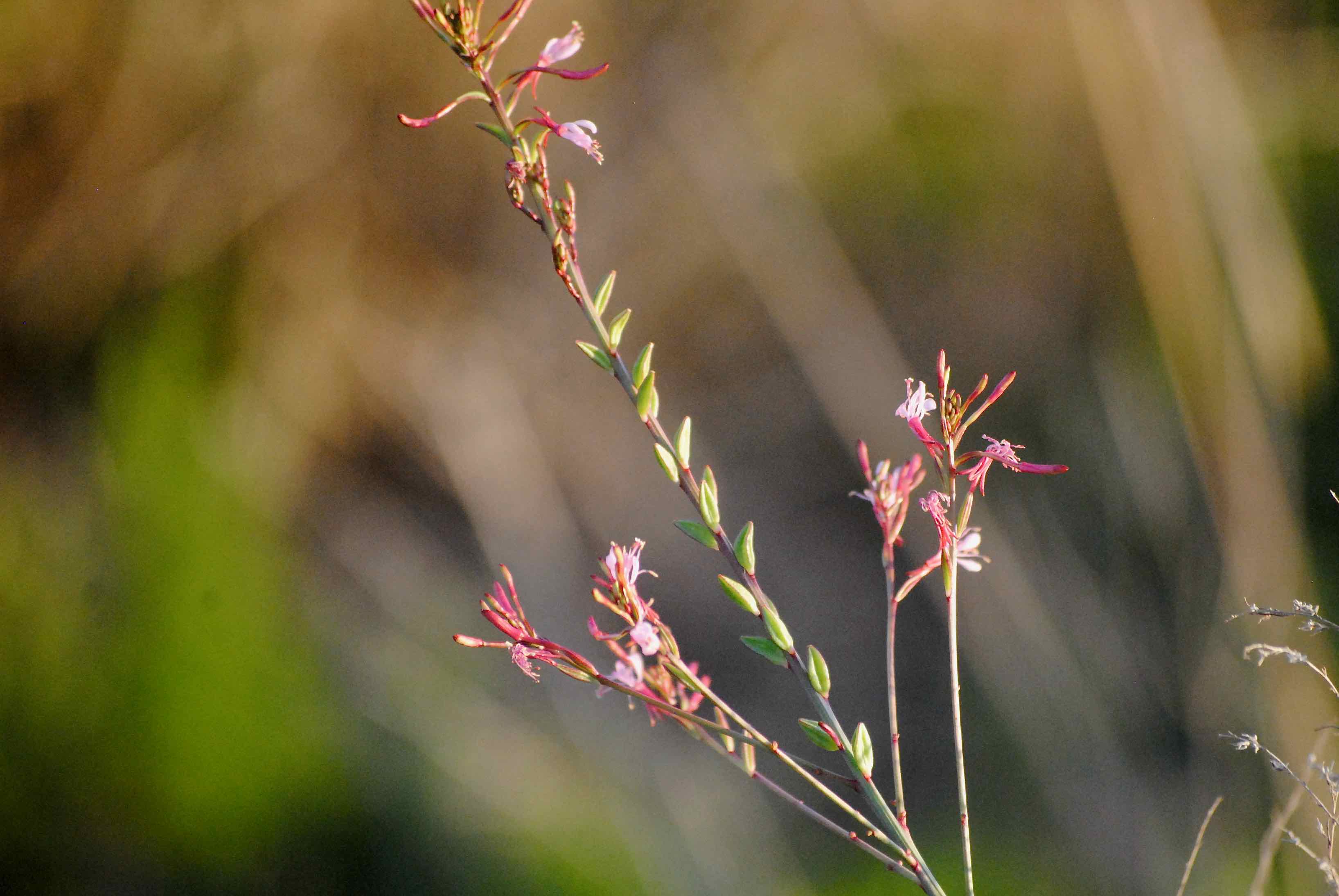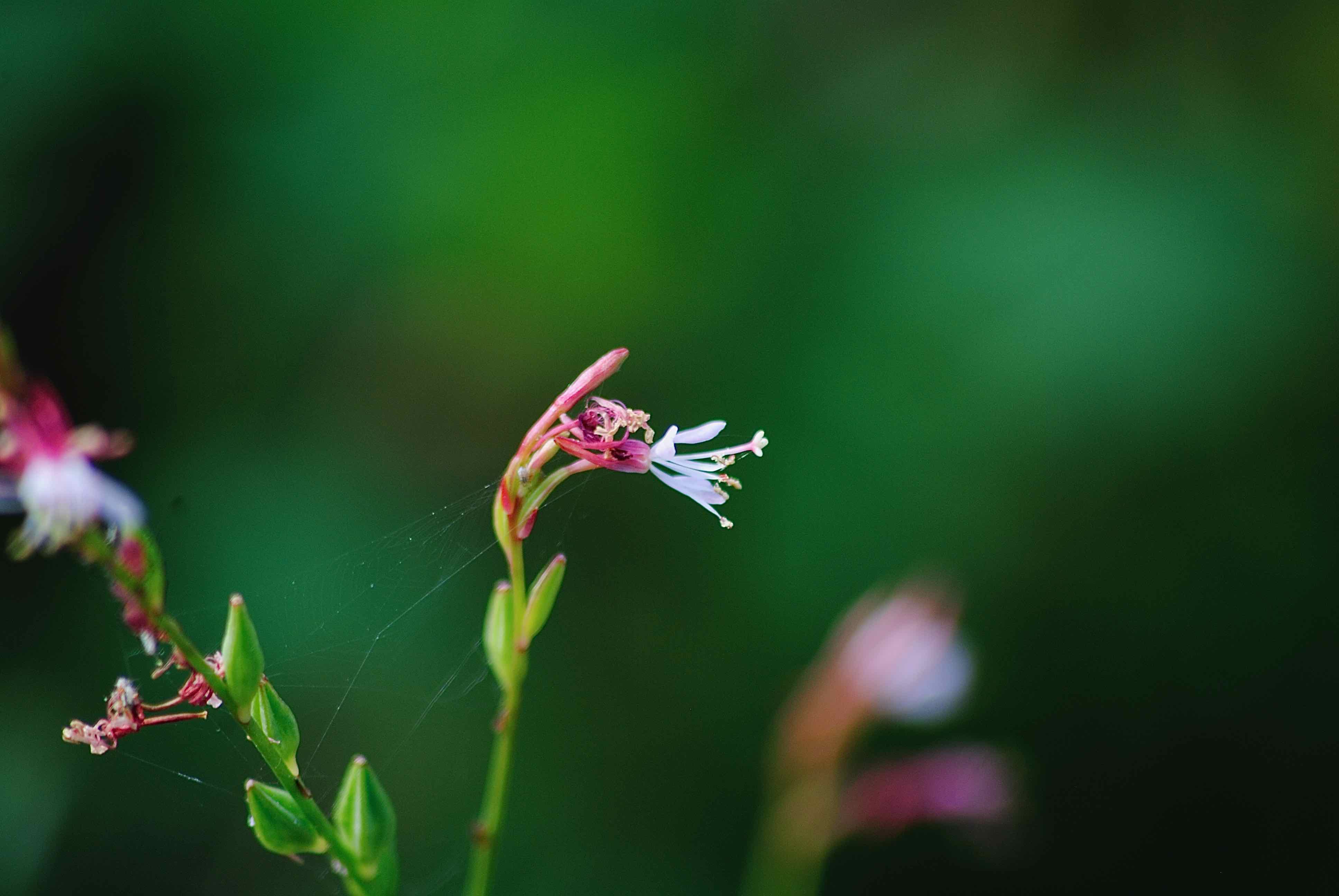
Southern beeblossom, photographed at Yamato Scrub Natural Area in Boca Raton, Palm Beach County, in April 2014.
Southern beeblossom, Oenothera simulans, is a late bloomer. Literally. Its flowers don't open up until evening, first white, then turning pink before they fade away the next day.
It's a fairly common plant found throughout the southeastern United States from North Carolina along the Atlantic to Mississippi on the Gulf Coast. It is a Florida native, found in all but two counties, both in the Panhandle. It's also native to the Bahamas.
It is a rather spindly plant, branched and with an open form. Some call it weedy looking, tall and thin, growing to about three or four feet. Leaves along the stem are short and narrow, smooth along the edges and with no noticeable leaf stem, or petiole. The flowers are small, with four petals on the topside and four prominent stamen and are formed along spikes called racemes. They bloom from February to November. Despite their small size, the flowers are magnets for pollinators, bees, moths, ants and butterflies. It is an annual.
It takes to full sun and well-drained sandy soils. Favorite habitats includes open woods, sandy fields, roadsides and dunes. Southern beeblossom is a member of Onagraceae, the evening primrose family. It is the host plant for larvae of the gaura sphinx moth and also the clouded crimson flower moth.
Native Americans have used plants related to southern beeblossom to treat various conditions, in ceremonies and as food. According to Florida Keys Wildflowers, Southern beeblossom has been used in folk medicine to treat pain and inflammation, but the book is unclear whether the "folk" were European settlers or Native Americans.
It is a cultivated plant, used by some gardeners to attract butterflies and bees, but others warn that it does self-seed and can become aggressive and weedy. Deadheading, removing spent flowers, is recommended
Until relatively recently, the United States Department of Agriculture and other authorities used Gaura angustifolia as the scientific name for Southern beeblossom. However, taxonomists (scientists who classify living things) using DNA evidence reclassified southern beeblossom and other members of the Gaura genus into Oenothera.
Other common names for southern beeblossom include southern gaura, southern butterfly weed and morning honeysickle.
The name gaura comes from the Greek word, gauros, meaning proud or superb, and refers to the lovely flowers that are typical of the genera.
Yamato Scrub Natural Area



